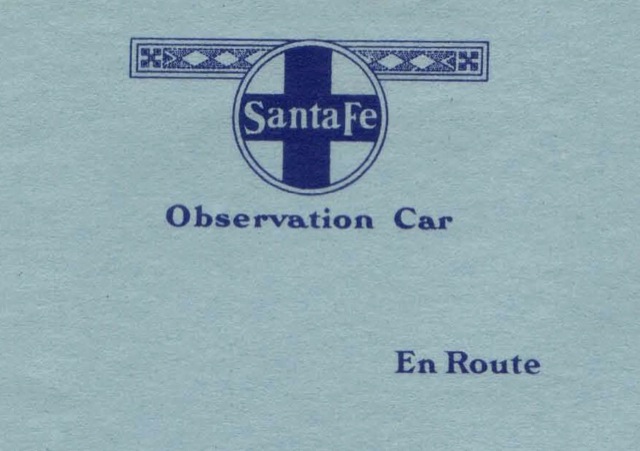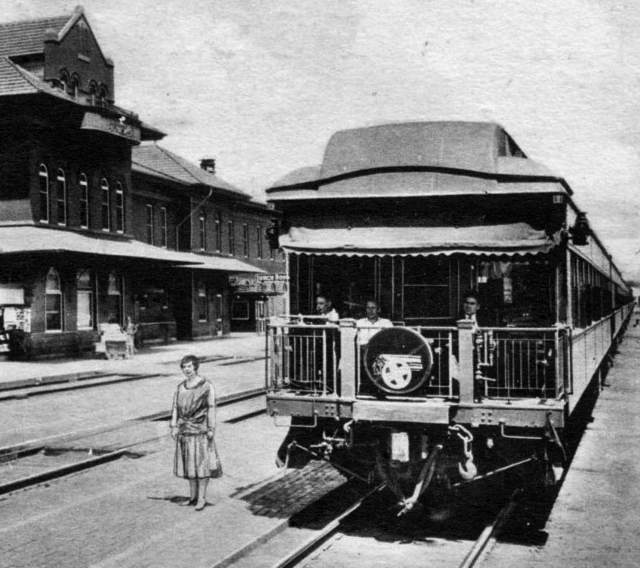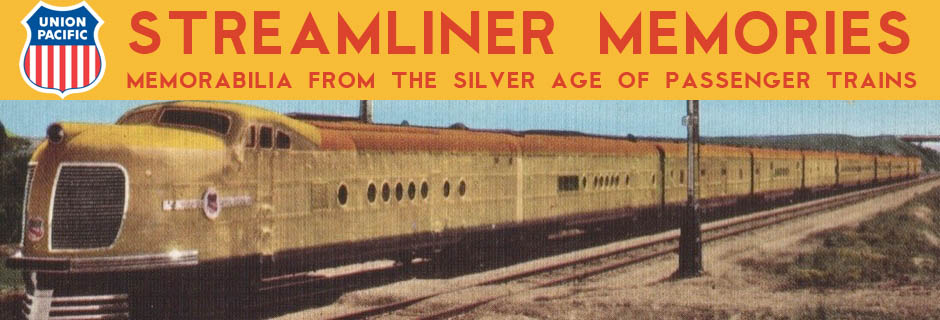This stationery doesn’t have a train name, but the font makes it plain that it is for a pre-war heavyweight train. Assuming that the railway’s premiere trains such as the Chief and California Limited had their own stationery, this stationery likely came from secondary transcontinental trains such as the Navajo (which operated from 1915-1940), Scout (1916-1948), Grand Canyon (1929-1971), or Missionary (unknown).

Click image to download a PDF of this letterhead. Click here to download a PDF of the matching envelope.
According to the June 1921 Official Guide of the Railways (warning: 281-MB PDF), in that year the Santa Fe had four Chicago-Los Angeles trains: the California Limited (trains 3 & 4), which made the journey in 71 hours; the Navaho (trains 2 & 9), which operated about 12 hours apart from the California Limited and required 72-1/2 hours; the Scout (trains 1 & 10), which left Chicago a few hours after the Cal Limited but required nearly 84 hours to get to Los Angeles; and the Missionary (trains 1-21 and 22), which went via Amarillo but managed the journey in the same time as the Navajo. The California Limited had an observation car, but of the other train only the Navajo had one and then only east of La Junta, NM, as the observation car and some of the other cars on the train split there to go to Denver. The California Limited was also the only train that had a diner all the way to Los Angeles; the others only had diners between Chicago and Kansas City.
I have a 1937 Santa Fe timetable that lists five daily trains between Chicago and Los Angeles, plus the Super Chief (trains 17 & 18) which started regular operations on June 15 of that year but only went once a week on its 39-3/4-hour trip. Among the daily trains, the Chief (trains 19 & 20) required 50-3/4 hours; the California Limited (still 3 & 4) needed 60-1/4; and the Grand Canyon Limited (trains 23 & 24) required 63-1/2 hours. All of these trains had observation and dining cars the whole way.

Observation car on the Chief in the Dodge City, KS train station in 1929.
In 1937, the Navajo and Scout went over the Amarillo route, with the Navajo (now trains 9 & 10) requiring 63-1/2 hours and still carrying an observation car only to Kansas City. The Scout (now trains 1 & 2) used 60-1/4 hours and had no observation car. While the Scout had a diner for its entire journey, the Navajo only had one from Chicago to Kansas City and again from Clovis, NM to Belen, NM. This means westbound passengers could buy dinners the first and second evenings and eastbound could order breakfasts the second and third mornings.
I could be wrong to assume that the Santa Fe had dedicated stationery for its premiere trains. But if it did, then this stationery was probably used on the Navajo or Grand Canyon Limited as other Santa Fe heavyweight trains didn’t seem to have observation cars.
